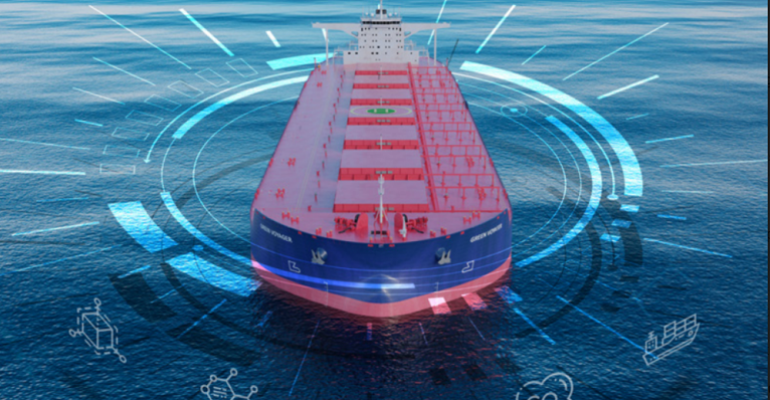Earth Day 2021 brought about a spate of publications regarding the shipping business’s pathways towards “decarbonisation” in the coming decade with a focus on the transition to non-fossil fuels.
The American Bureau of Shipping (ABS) joined the fray with its – Setting the Course for Low Carbon Shipping - View of the Value Chain, the third in a series of Low Carbon Shipping Outlook reports. Importantly, collaborators on this publication included the Rocky Mountain Institute, which had significant input into The Poseidon Principles, whose banking signatories reward borrowers who are funding vessels with lowered carbon intensities.
The voyage ahead will be bumpy with the report’s authors saying: “There are no defensive strategies against climate change and no business is expected to continue as usual. The industry should anticipate further increased volatility in an already cyclical environment”.
Their prescription, at the highest level, is a strong dose of: “interim solutions [which] will be crucial for transition. A staged transition, with a focus on retrofitting existing vessels and fuel substitution, can offer valuable time for more aggressive deployment of decarbonisation technologies while allowing supply chains to become commercially available. At the same time, this can help to avoid early vessel retirement and asset depreciation, while also avoiding some technology selection risks.”
The first part of the report is mixture of economics and well-intentioned cheerleading for a more sustainable industry; both of these might be better left to others. Where ABS shines is its ability to carefully and understandably explain, with excellent graphics and minimal formulae, the complexities of the IMO’s measures that will guide the industry towards 2030, as well as calculations underlying Poseidon Principles and Sea Cargo Charter.
The technical discussions, with pro’s and con’s of particular alternatives, including their production challenges at present, to today’s present fuels, are also very well done, and much more useful than similar attempts by others. In shining light on the aforementioned “transitions”- with the inclusion of some prototype vessel designs that could burn ammonia, or LNG/hydrogen, the ABS’s ability to discuss retrofitting of existing vessels (for example, suitability of one engine type versus another) puts this report way ahead of many more general discussions around the very crowded maritime reading lists.
Worth noting is the ABS’ more evenly balanced attitude towards LNG fuels, albeit clearly part of the “transition”, in stark contrast to the World Bank, another Earth Day report author, which decried its use as a marine fuel. Comporting with the World Bank viewpoint, however, ABS does note that, when the full “well to wake” cycle is considered, “life-cycle analysis clearly identifies the need for green ammonia and hydrogen production in order to have meaningful GHG emissions reduction from these zero-carbon fuels.”
The bottom-line, from this 80 page analysis, is summed up very matter-of-factly by the report’s authors, who conclude by positing that: “The advent of modern dual-fuel engine technology makes the transition to low- and zero-carbon fuels easier to achieve than the recent past.”
ABS stresses the urgency of thinking ahead on accommodating future fuels, writing that: “A major component of the scope of work for these conversions is the fuel storage system, this it is essential to design systems for new ships that accommodate a variety of different fuels with little or no modification.”
The authors note further that: “The transition to alternative fuels can be made much more attractive if it is planned at the newbuilding design stage. In particular, the design of the fuel tank should be specified based on all the fuels planned to be used throughout the life of the vessel.” Indeed, this is very much in line with recent announcements from Eastern Pacific Shipping, and others, planning for ammonia fuels in their vessel designs.
Copyright © 2024. All rights reserved. Seatrade, a trading name of Informa Markets (UK) Limited.
Add Seatrade Maritime News to your Google News feed.  |

